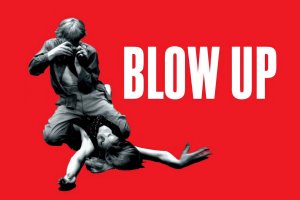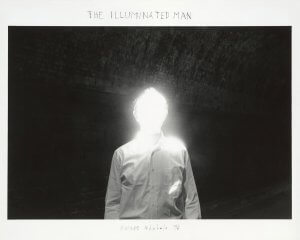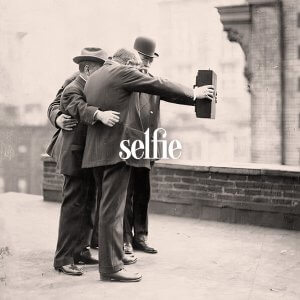Robert Capa: the “American” who was there
Robert Capa, the American who was there. Learn the true story of one of the sacrosanct names in the history of photography.
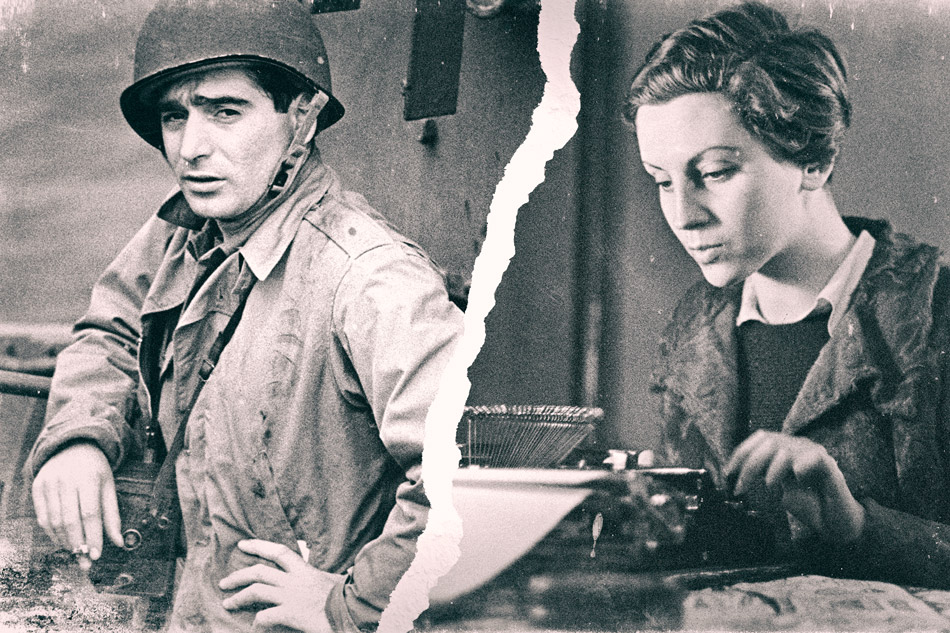
Contenido
Indochina, May 1954
In the spring of 1954, France is on the verge of failure in its attempt to regain the French colonies in Indochina after almost eight years of war with Ho Chi Minh‘s Viet Minh.
Riding “pack” in a jeep, a photographer shoots with an old Contax II loaded with black-and-white film as a French army convoy, of which the vehicle is part, drives into an area of thickly vegetated fields. The last French positions are about to fall. The defeat of France is a fact and the end of the war is imminent. The bloodletting that ravaged the territories of the former French Indochina (Vietnam, Cambodia, Laos) for decades is not.
The bombs and gunfire can be heard too far away and that, for the photographer, means not being close enough to the action to be able to capture the “decisive moment” with his camera. So, taking advantage of a brief stop by the convoy, he decides to get out of the jeep and walk into the undergrowth with the intention of approaching a distant village, of which he can only make out, from his position, a platoon of French soldiers and the occasional armoured car. In his hand he holds the old Contax, and around his neck hangs a Nikon S loaded with Kodachrome film.
John G. Morris: “Bob, you don’t have to do that job, it’s not our war!”
Life magazine loses its photographer
A few weeks earlier, the magazine Life magazine magazine had lost its photographer in the area, Howard Sochurek, who had to return to the United States after several months as a correspondent covering the war in Indochina. This prompted editor Ray Mackland to search desperately for a replacement, offering him $2,000 for thirty days’ work in the middle of the conflict zone. But for the photographer who got out of the jeep, the $2,000 was not the real reason why he finally decided to accept the contract without hesitation, despite the warning of his friend John G. Morris: “Bob, you don’t have to do that job, it’s not our war!
Our protagonist is no stranger. Nor is this the first war he has fought as a reporter, even if it is not “his war”. At just 40 years old, he is one of the most sought-after photographers in the world, co-founder of the most important and influential photographic agency in history, and the originator of that famous quote that says “If your pictures aren’t good enough, it’s because you didn’t get close enough”. Bob is not there for $2,000. Bob is there because he needs to be “close enough”.
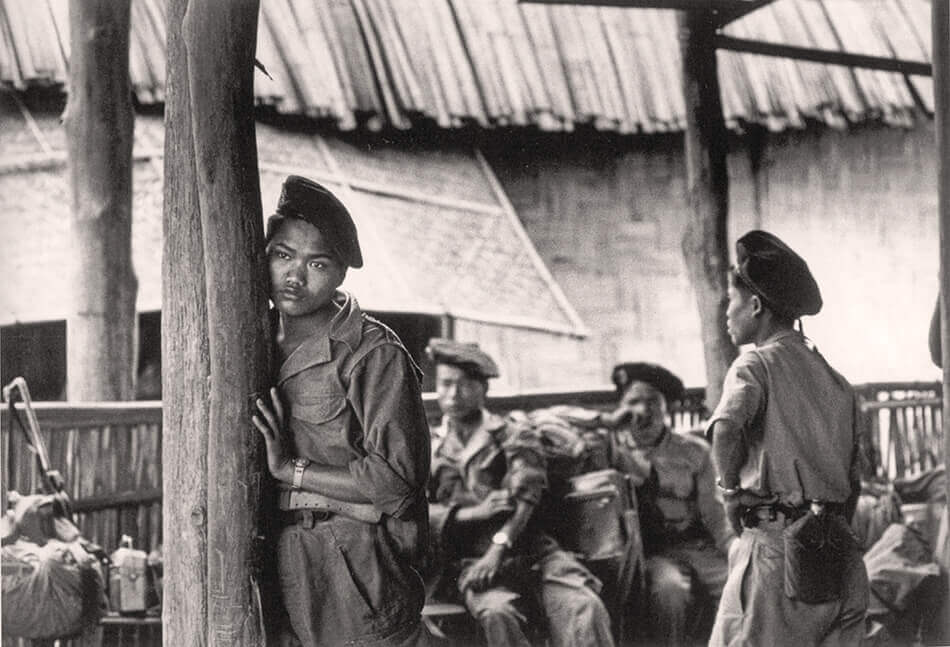
Photograph by Robert Capa during the Indochina War. © Robert Capa / Magnum Photos
A fateful explosion
Suddenly, a loud thud disrupts the convoy, but it doesn’t really surprise anyone. The soldiers know exactly what caused it. Some poor wretch has stepped where he shouldn’t have. John Martin Mecklin, also an editor for Life magazine, is the first to arrive in the area of the explosion. Bob, still holding his camera tightly in his hand, lies on the ground, inert, his left leg completely mutilated, his chest ripped open by the shrapnel. He mumbles something, but no one can make out what he is saying. He is quickly evacuated in a military ambulance, but to little avail. The only thing that could be done after arriving at the hospital was to certify his death on 25 May 1954.
Three weeks later, his body was repatriated to the USA in a wooden box with the following inscribed on it: “Mortal remains. Robert Capa. Photographer and reporter. Died 25-5-1954. North Vietnam”.
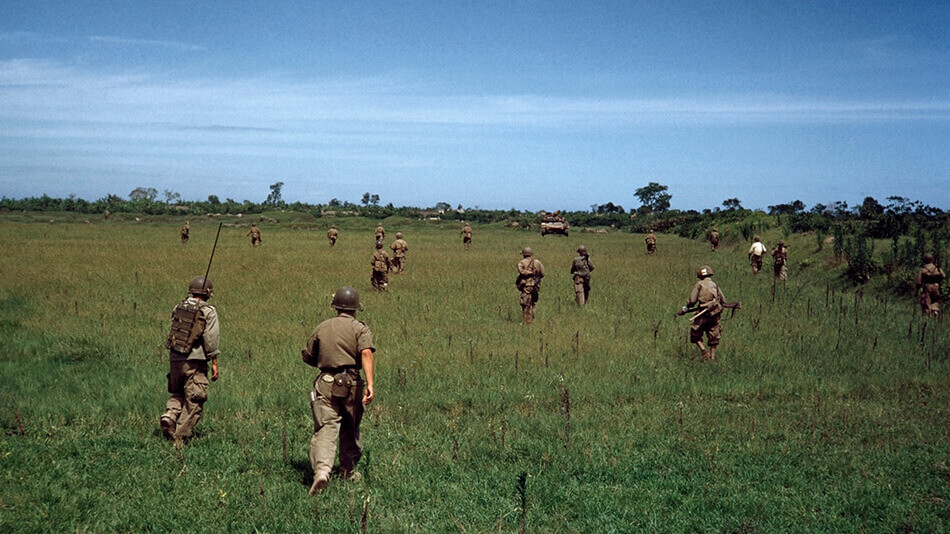
Last photograph taken by Robert Capa moments before he stepped on the mine that killed him. © Robert Capa / Magnum Photos
But the mortal remains that finally rest in Amawalk Cemetery (New York, USA) are those of Endre Ernö Friedmann. The other part of the Robert Capa myth has been resting, since 1937, in the Père Lachaise cemetery in Paris, under a tomb sculpted by Alberto Giacometti himself on which one can read: “Gerda Taro, 1911-1937”.
Robert Capa never existed
There are still those who are surprised to learn that one of the sacrosanct names in the history of photography, Robert Capa, did not exist as such beyond myth. And there are those who turn pale when you tell them that much of the photographic material attributed to this imaginary American photographer is originally the work of two different authors.
The confusion is such that, to this day, it is still a real headache to attribute the original authorship of each photograph from Capa’s first period. Because the story of Robert Capa, founding member of the prestigious Magnum Photos and famous for being the only photographer present at the first wave of the Normandy landings in 1944, is the story of his creators, Endre Ernö Friedmann (Budapest, Hungary, 22 October 1913) and Gerta Pohorylle (Sttutgart, Germany, 1 August 1910), later known by the pseudonym Gerda Taro.
There are still those who are surprised to learn that one of the sacrosanct names in the history of photography, Robert Capa, never existed as such beyond myth. And there are those who turn pale when you tell them that much of the photographic material attributed to this imaginary American photographer is originally the work of two different authors.
The Hungarian
Endre Ernö Friedmann was born in Budapest (Hungary) in the autumn of 1913 into a wealthy Jewish family. He developed an interest in photography through the Hungarian/Dutch photographer Eva Besnyö, with whom he shared his first photographic experiences when they were both still teenagers.
But it was his later friendship with the intellectual Lajos Kassák that marked the beginning of his career as a photographer. Kassák, in addition to being a writer, painter and publisher, was linked to the socialist movement at the turn of the century, showing a special interest in Soviet Constructivism, which led him to act as a kind of patron for many Constructivist artists of the time.
He saw photography as the perfect medium for showing and denouncing the abuses of the capitalist system, and Friedmann was one of his pupils whom he moulded not only as an artist but also as a person. He even provided him with contacts and financial support so that he could develop in his creative field.
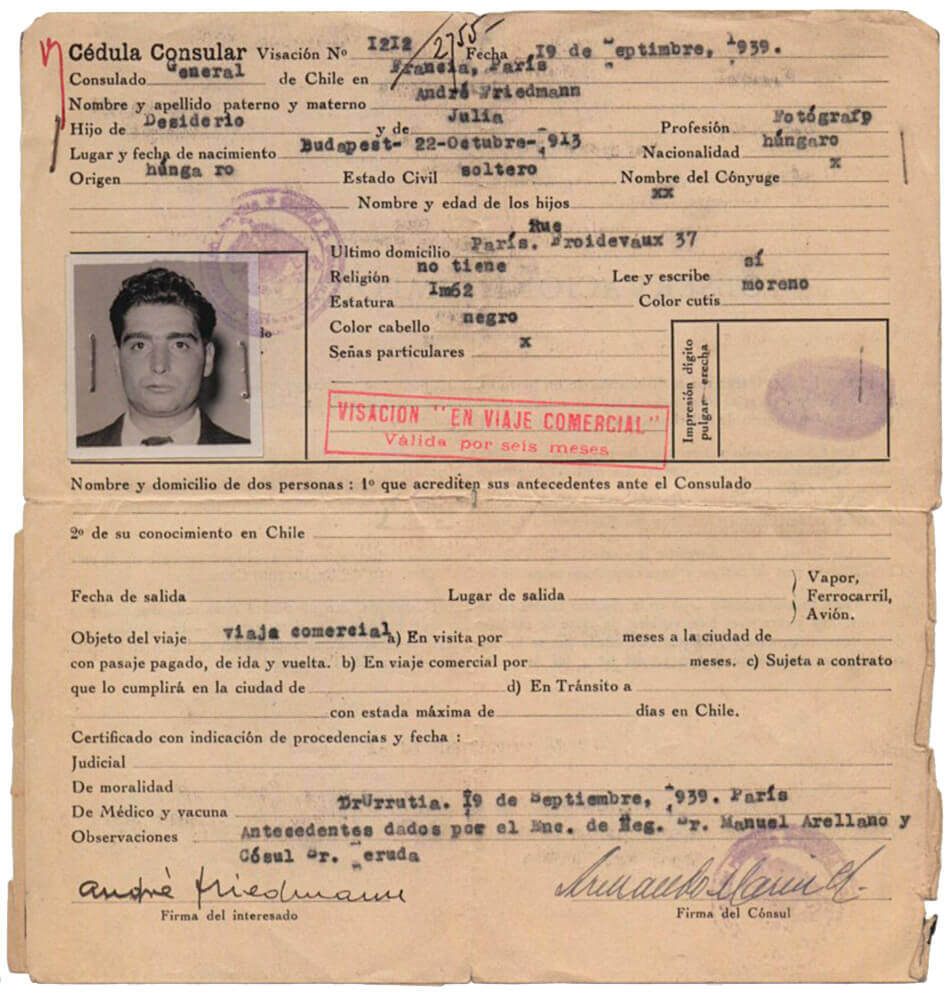
Original visa of Endre Ernö Friedmann, already with his name adapted to French: André Friedmann.
World War I and the Crash of ’29
The consequences of the First World War and the Crash of 1929 led to the rise of fascism in Europe, and Hungary was no stranger to this situation. After the fascist government came to power, Friedmann decided to leave the country at the age of 18, and after a brief stay in Germany, he finally settled in Paris, where he met the Polish photographer David “Chim” Seymour, who gave him the opportunity to prove his worth as a photojournalist, getting his first job as assistant photographer for the magazine Regards, which at the time was covering the mobilisations of the Popular Front.
But it did not take Friedmann long to stand out, not only for his talent as a photographer, but also for his ability to be “as close as possible to a good photo”, even infiltrating as a supposed worker and dressed in a small Leica, the conference that Leon Trotsky, already in exile, gave in Copenhagen in 1932, capturing images that would go down in history as an essential graphic document of the life and charisma of the former Russian leader.
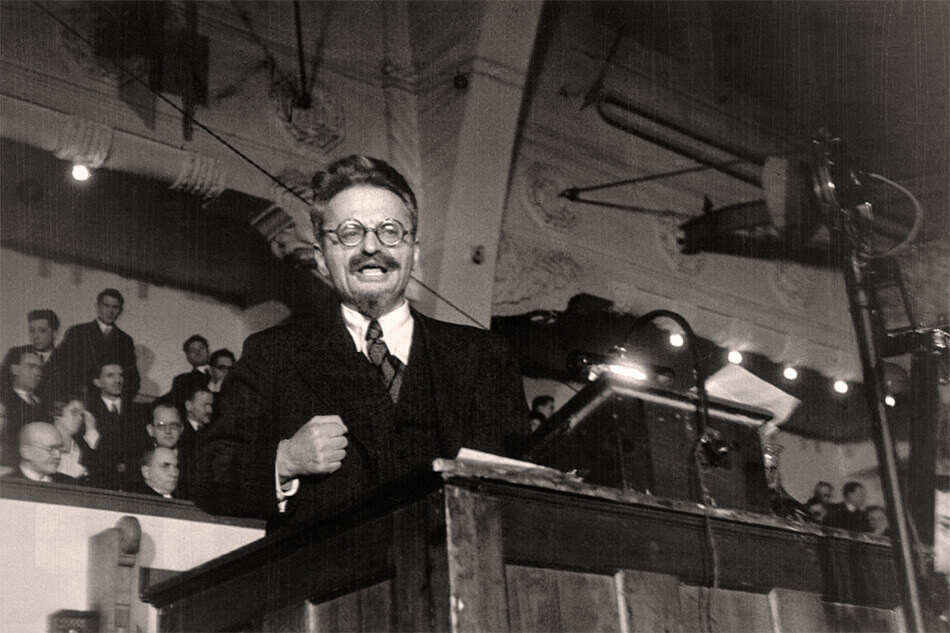
Photograph taken by André Friedmann during Leon Trotsky’s speech at the Copenhagen Conference in 1932.
The German
Gerta Pohorylle, as she was actually called, was born in Stuttgart (Germany) on 1 August 1910, although some date her birth a year later. Her origins, also Jewish like Friedmann’s, place her in a bourgeois family of Polish descent in the troubled Germany of the early 20th century. At a very young age she began to sympathise with socialism and the workers’ movement to the point of renouncing any family privilege or comfort, which led her to join various left-wing movements opposed to the rise of German Nazism.
In 1933, shortly after Hitler came to power, she was arrested for campaigning against the Nazi government and the whole family was forced to leave Germany, relocating to various countries.
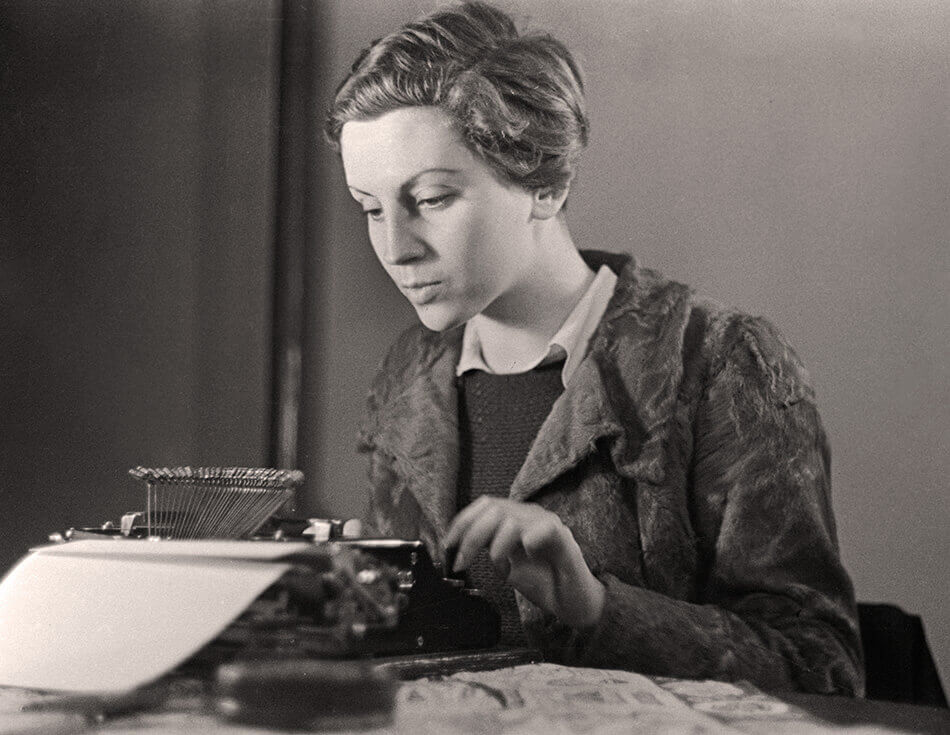
Gerta Pohorylle, later known under the pseudonym of Gerda Taro
Gerta escaped to Paris and after working as a waitress, nanny and typist, she managed to get a job as a secretary at Alliance Photo, where she came into contact with the ins and outs of the photographic market at that time.
It was at this point that her vocation for journalism was born and she became Gerda Taro, emulating in the sonority of her name that of the actress Greta Garbo, with the intention of simplifying and making her pronunciation and spelling more understandable in other languages such as French or Spanish.
It is in this bohemian and vibrant Paris, still far removed from the development and ravages of Nazism prior to the Second World War, that the lives of Gerda Taro and Endre Ernö Friedmann converge in an intense and particular story that would go far beyond the love and admiration they professed for each other.
The American photographer
It did not take Gerda long to develop and put into practice the knowledge of photography that her partner gave her. Gerda, for her part, endowed a rough and unkempt Endre with the manners and elegance that would help him gain access to the intellectual and anti-war movement in Paris between the wars.
Gradually, the emotional bond gave way to a professional one and both began to work as photojournalists, initially signing their photographs and articles with their own names, the now Frenchified André Friedmann and Gerda Taro. But it was not long before they found it difficult to make their way as freelance reporters, as it was practically impossible to get the most important assignments from press agencies, which, as a rule, tended to prefer more experienced and, above all, better-reputed journalists and photographers.
Various biographical studies place Gerda as the architect of the ingenious strategy that changed their lives. Fed up with seeing the best job opportunities pass under their noses without being able to take them, and in urgent need of income to maintain their standard of living in the cosmopolitan Paris of the 1930s, Gerda posed the dilemma: what jobs could two young strangers in those difficult times, with no experience, no recommendations and, to make matters worse, Jewish, apply for?
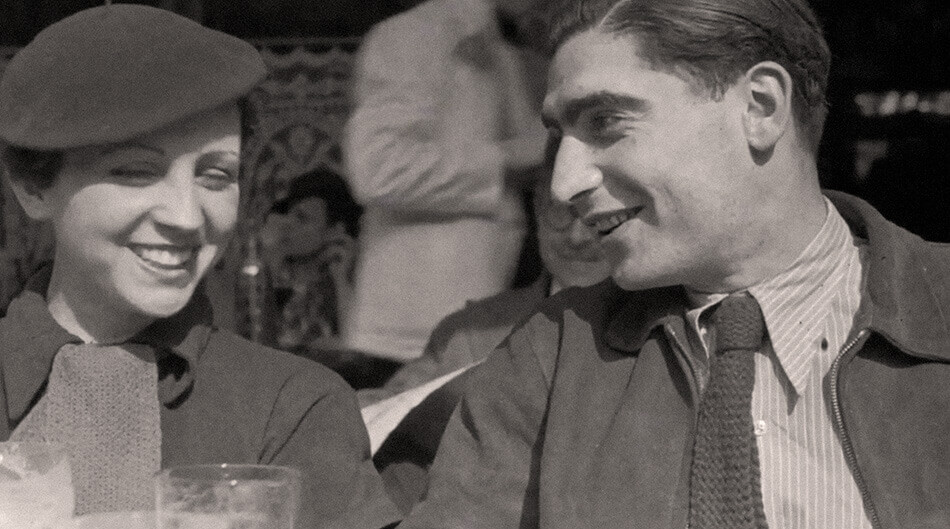
Gerda Taro and André Friedmann
The creation of the character
So they devise a plan that consists of creating a fictitious character who they sell to the press and photo agencies based in Paris as a famous and notable American photographer who has travelled to Europe to cover the different events that are taking place on the old continent and which are keeping the US on tenterhooks because of their possible global repercussions.
His name, Robert Capa, the pseudonym by which both Friedmann and Taro would henceforth sign their photographic chronicles and whose representation in reality would be embodied by Friedmann himself.
Robert Capa, the pseudonym under which both Friedmann and Taro would henceforth sign their photographic chronicles and whose representation in reality would be embodied by Friedmann himself.
No doubt the experiment worked, because it was from that moment on that the job offers came in. Everyone began to take an interest in the work of a mysterious and famous American called Robert Capa, who had moved to European soil, and who had a certain ease of access to agency assignments for three times the price that two deadbeats like Friedmann and Taro could command.
Photo Capa
In July 1936 the Spanish Civil War broke out and the Robert Capa duo decided to travel to Spain, only a month after the military uprising, motivated by the adventure, the novelty and the particular idiosyncrasies of the conflict and, of course, their strong political convictions in defence of the Republic and the fight against fascism.
They settled in Barcelona, where the Republican militias were training for combat, and it was there that Gerda took the famous photograph with her Rolleiflex, in square format, published by the magazine Vu, in which a Republican combatant with her knee on the ground and high heels practised shooting with a revolver.
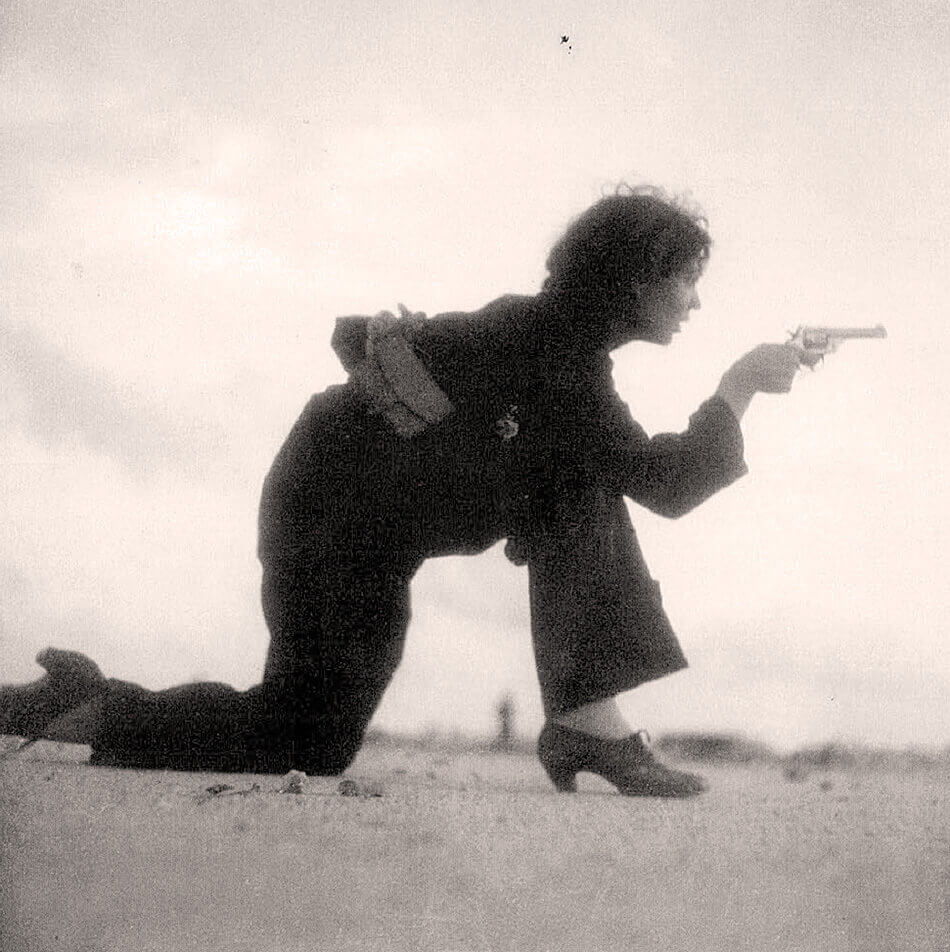
Iconic photograph taken by Gerda Taro at the beginning of the Spanish Civil War.
For André Friedmann, however, this was not the first time he had set foot on Spanish soil. In the spring of 1935, also commissioned by the magazine Vu, Friedmann had already photographed Colonel Emilio Herrera in Madrid as he attempted to break the altitude record in an innovative stratospheric suit that was to form the basis for future space suits.
It was during that pre-war stay in Spain that he photographed Holy Week and the April Fair in Seville with his brand new Leica III. The small camera that, in 1937, he would give to Gerda as a gift, when he opted for the modern Contax II which would accompany him through the following years until the fateful day in May 1954.
The first days of war
In those early days of the war, the real battle was being fought in Andalusia, and it was there that Friedmann and Taro travelled to be close to the action. It was near the Cordovan town of Espejo that they took the famous photograph Death of a Militiaman, which shows a Republican fighter falling on his back at the very moment he was hit by a bullet.
The image, a symbol of the Spanish conflict, was published for the first time in a report in the magazine Vu on 23 September 1936, but it was not until a year later that it achieved its status as an iconic image of the 20th century after appearing in Life magazine on 12 July 1937.
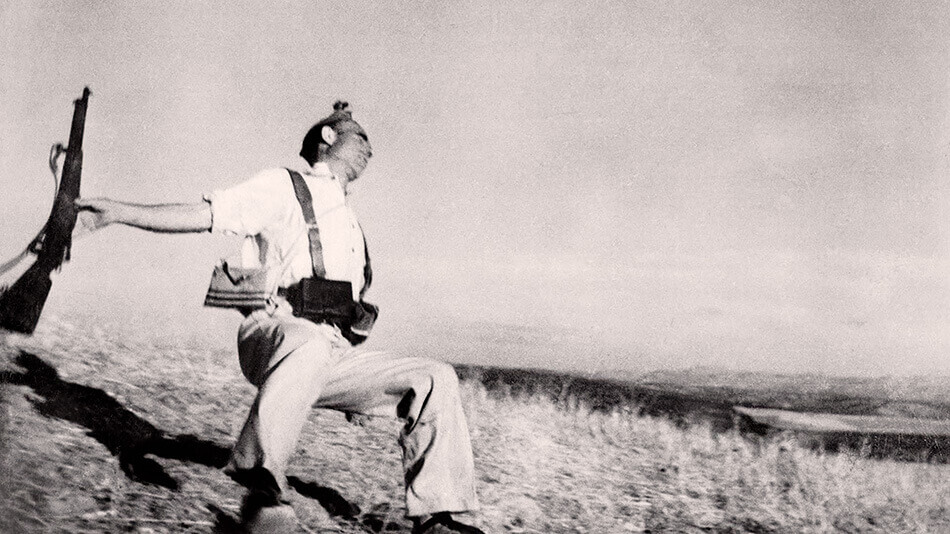
Death of a militiaman, one of the most iconic photographs in the history of photography. © Photo Capa
Death of a militiaman is undoubtedly one of the most controversial and polemical photographs of all time, despite being considered one of the best war images of all time. The identity of the supposedly slain militiaman remains a mystery to this day, although recent research has even named him Federico Borrell García “El Taino”, although this has not been fully corroborated.
The authenticity of the militiaman’s death has also provoked conflicting opinions, being considered by many as a staged image in which what was actually photographed was the result of theatricalisation.
Who made this image?
But the discussion about Death of a Militiaman has gone beyond whether or not it is a montage, because one of the consequences of the creation of Robert Capa’s character was, and continues to be, the difficulty in attributing the true authorship of this image…
But the discussion about Death of a Militiaman has gone beyond whether or not it is a montage, because one of the consequences of the creation of Robert Capa’s character was, and continues to be, the difficulty in attributing the true authorship of this image, like that of so many others taken by André Friedmann and Gerda Taro during the first two years of the Spanish Civil War. After all, Robert Capa was still, at that time, a brand name that served to place and sell his photographs, signed on the back with the Photo Capa stamp that gave them prestige.
But many witnesses who shared experiences with Gerda and André during those years later commented that it was not at all unusual to see them sharing the same camera in their photographic reports and, moreover, the type of framing and composition of those images that have been identified as exclusive photographs by Gerda Taro were practically similar to the others signed as Photo Capa or Capa and Taro.
Greda and André separate
As the months went by, the relationship between Taro and Friedmann deteriorated. Gerda begins to be valued as a photographer outside the Capa label and this leads her to prioritise her professional development over any sentimental commitment to André, who apparently intends to marry her.
Their last images together were a report for the magazine Regards for a writers’ conference. From then on, the two became estranged and André Friedmann kept the name Robert Capa, by which he would be known until the end of his life.
But the story of these two lovers committed to the core of their vocation and ideological convictions had yet to take a final turn.
The little red fox
In July 1937, the troops of the Popular Army of the Republic were about to successfully complete their offensive in what was known as the Battle of Brunete, with the intention of putting an end to Franco’s rebel forces and the pressure they were exerting on Madrid.
Victory was already in the air, but the rebel side rearm in the central part of the country, launching a harsh counter-offensive against the Republican troops that resulted in one of the bloodiest clashes of the Spanish Civil War, in which the use of tanks and their strategy on the battlefield played a decisive role.
Both the Republican and Nationalist sides suffered an incalculable number of casualties, but it was undoubtedly the troops of the Republic who suffered the greatest devastation, forced to retreat while being massacred by Condor Legion planes and the use of heavy artillery by Franco’s army.
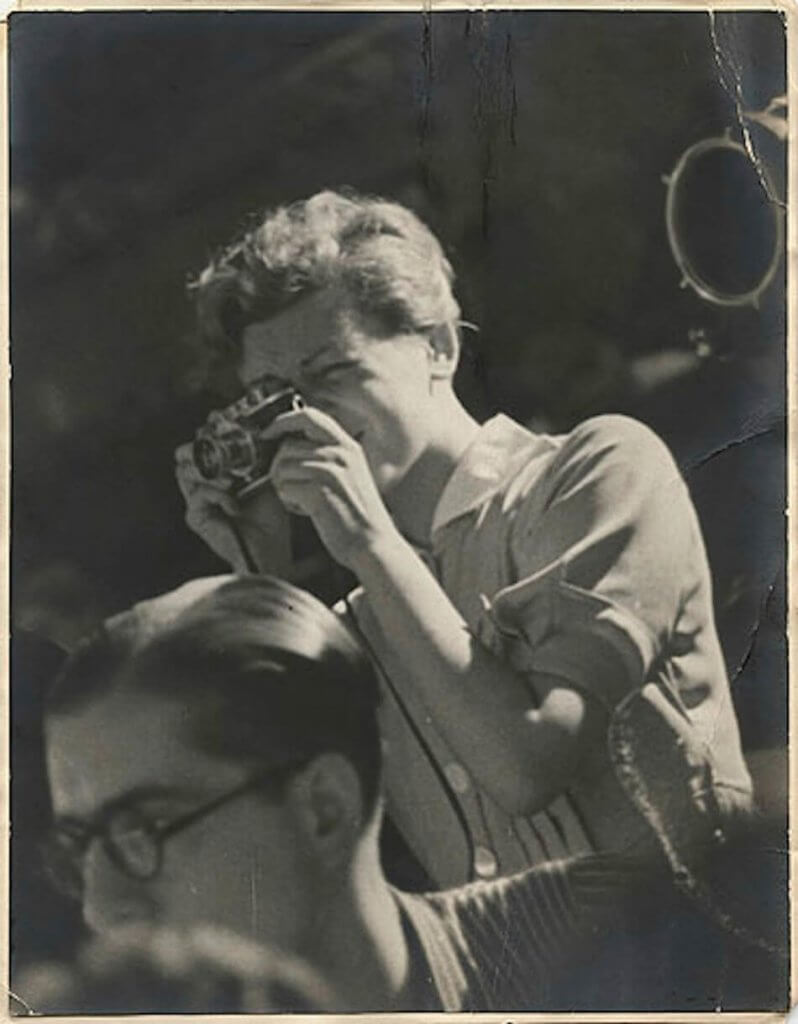
Gerda Taro, nicknamed “the little red fox”, but also known as “the girl with the Leica”.
Gerda Taro and the writer and journalist Ted Allan, in the middle of the retreat, climb onto the side sills of International Brigade General Walter’s Chevrolet Matford. Chaos and despair are rife, and Gerda is not missing a detail with her Leica. Suddenly a T-26 armoured car, from the same Republican side, suddenly swerves across the road, forcing the driver of the vehicle in which the two reporters are riding to manoeuvre abruptly, causing them to fall at the tank’s feet. Ted Allan manages to avoid the tank, but Gerda is not so lucky and is disembowelled by the chains of the T-26.
Greda’s unexpected death
Gerda Taro, “the little red fox”, as she was nicknamed by many, died the next day in a field hospital, just a month short of her 27th birthday.
Rafael Alberti himself organised her funeral in Spain and later, after her body was transferred to Paris, she was buried in the Père Lachaise cemetery after a massive procession in her honour. Alberto Giacometti himself, a friend of Gerda and André, was commissioned to sculpt her tomb, consisting of a concrete block inscribed with her name and the dates of her birth and death, and accompanied by the figures of a goblet and a falcon.
It is said that André Friedmann, who had become Robert Capa forever, walked the route to the cemetery in the front row of the procession, weeping inconsolably, utterly devastated by the loss of the person who had marked his life forever. Gerda Taro was not only his lover and companion. Gerda Taro sculpted the new André Friedmann when he was no more than an ambitious aspiring photographer and turned him into the myth that would mark the history of journalistic photography. Gerda Taro created Robert Capa.
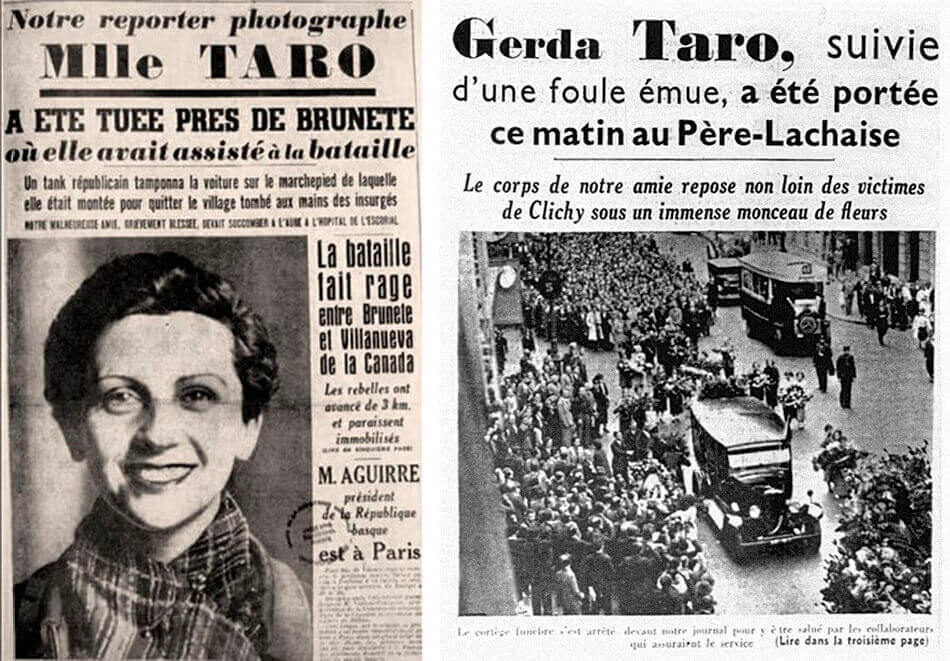
Clippings from the Parisian press in 1937, reporting the death and burial of Gerda Taro.
Invisibilised by its own creation
Invisibilised, not only because she was a woman and a communist, but also because she was hidden behind the long shadow of her own creation, it has taken almost a century for the figure of Gerda Taro to be recognised with the importance she deserves. It is not for nothing that we are talking about what is considered to be the first woman photojournalist in history to set foot and die on a battlefield.
Invisibilised, not only because she was a woman and a communist, but also because she was hidden behind the long shadow of her own creation, it has taken almost a century for the figure of Gerda Taro to be recognised with the importance she deserves.
The last image of Greta Taro
At the beginning of 2018, in the middle of the digital era, a photograph shared on Twitter caused a real stir. It shows, in black and white, a woman lying on the ground while a doctor wipes blood from her face. This image, published by retired British general Sir John Kiszely, son of a Hungarian doctor, Janos Kiszely, who was with the International Brigades during the Spanish Civil War, was taken in the Torrelodones military hospital moments after Gerda Taro’s fatal accident, and it is suspected that the badly injured woman, perhaps already dead, who appears in the photo is Taro herself, receiving the care of the then young Dr. Janos Kiszely.
Despite the confusion caused by an annotation on the back of the photograph and some contradictory data, the fact that Kiszely senior himself acknowledges, in an interview found in a war archive, having attended Gerda Taro during the Battle of Brunete and some coincidences in the accounts that have been preserved from that period, have led us to believe that this is possibly the last surviving image of Gerda Taro.
But like the mystery of the gestation of Death of a Militiaman, this will be one more mystery to add to the unique and extraordinary story surrounding the controversial figure of Robert Capa.
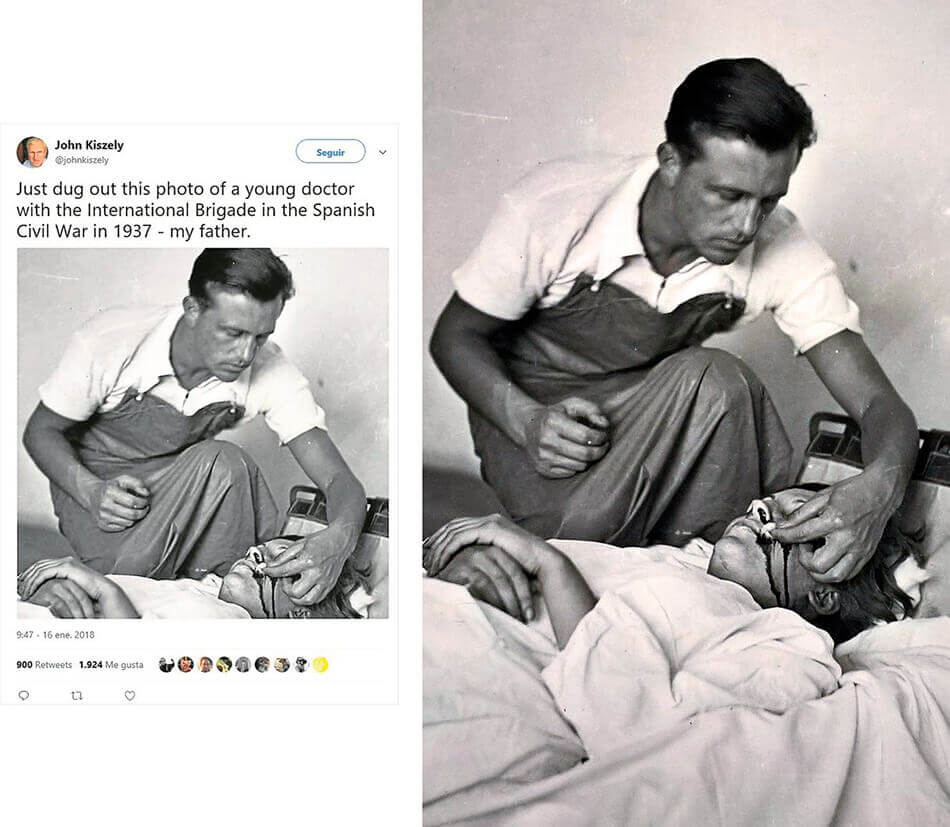
Dr. Janos Kiszely treating a badly injured woman in 1937 who could be Gerda Taro.
Bob Capa
Two milestones would mark the subsequent career of Robert Capa, “Bob” to his friends. In the journalistic field, undoubtedly, his adventure as a photojournalist during the Allied landings in Normandy on 6 June 1944, and in the business field, the founding, together with the photographers Henri Cartier-Bresson, “Chim” Seymour, George Rodger, Bill Vandivert and the lesser-known Maria Eisner and Rita Vandivert, of the famous and long-lived Magnum Photos agency.
Robert Capa’s participation in the Normandy landings was not without controversy either. On board one of the barges that left England to cross the English Channel towards France in the early hours of 6 June 1944, Capa was the first photographer to land at the key point of Omaha at first light in the early morning, fully involved in the first wave of the Allied attack, which was the one that received the greatest impact from the German defences stationed and protected behind the huge fortifications built along the entire perimeter of the coast.
100 shots in an agonising 1.5 hours
The well-known story goes that Capa shot about 100 shots over the course of an agonising hour and a half, with bullets whistling around him, amid mortar and artillery fire, which would be perfectly perceived in the resulting shocking images, full of nerve, shaky, and even out of focus, factors that would infer an even more dramatic character to them.
After the battle, the London headquarters of Life magazine panicked after receiving no news of Capa, and some even presumed him dead after receiving the testimony of an American sergeant who claimed to have seen the body of a man wearing photographic equipment floating in the water among the trail of corpses scattered along the beach.
But the next day, a motorcyclist turned up at the Life offices and delivered a package containing several rolls of film. They are the long-awaited photographs taken by Robert Capa during the landing in France.
The well-known story goes that Capa shot about 100 shots over the course of an agonising hour and a half, with bullets whistling around him, amid mortar and artillery fire, which would be perfectly perceived in the resulting shocking images, full of nerve, shaky, and even out of focus, factors that would infer an even more dramatic character to them.
Much of the material lost forever
Quickly, the publisher John G. Morris orders one of his employees to go into the laboratory and develop all the negatives. But apparently, in the rush and stress of the situation, much of the developed material melted in the dryer due to excessive heat, with the result that only 11 photographs were saved, those known as The Magnificent Eleven, which after their publication would become, despite their obvious lack of quality, one of the most important graphic documents ever taken during combat, the only images known to exist of the exact moment of the first act of the Normandy landings. A milestone in photojournalism.
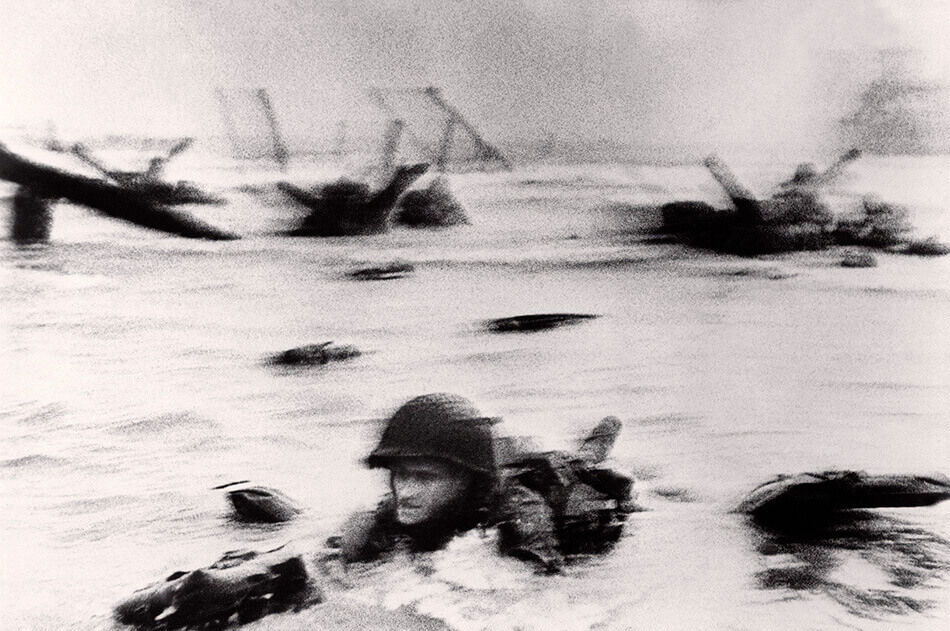
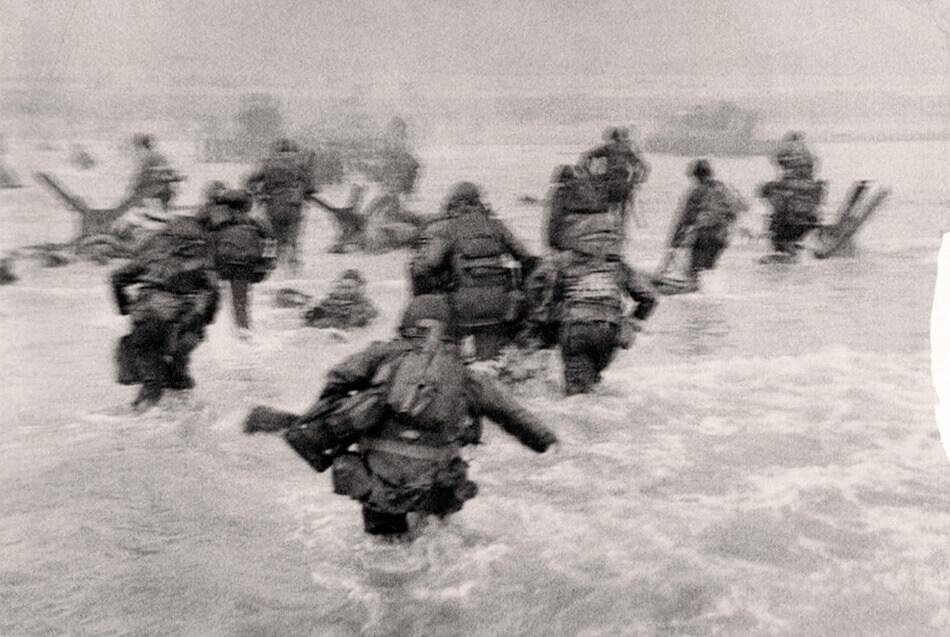
Two of the “Magnificent Eleven
But some researchers have questioned not the veracity of the photographs taken by Capa, but rather the history that goes with everything that happened in the making of those images, on and off Omaha Beach.
On the one hand, it is suspected that the story of the melting of the negatives was just a ploy by Life to hide the fact that Capa shot considerably fewer photos during the landing than the official version, and that in the excitement of the situation he did not correctly insert the Kodak film into the Contax II he used, which would explain the notches on the original negative attributed by Life magazine to the melting of the material in the dryer.
On the other hand, some accounts do not place him in the first wave that landed at Omaha, but he did accompany a group of engineers in charge of blowing up the obstacles that covered the beach at Colleville-sur-Mer.
Photographs that are part of history
Nevertheless, speculation aside, the photographs taken by Robert Capa during the Normandy landings are now part not only of the history of photography, but of history itself.
A History in need of icons to give meaning and credibility to some of its most fascinating and no less controversial passages.
Magnum Photos
Two years after the end of the Second World War, Magnum Photos was born, straddling New York and Paris, under Capa’s own premise of “being in the right place at the right time”.
The Magnum agency not only marked the rise of journalistic photography from then on, but also revolutionised the way its photographers’ work was shown, stressing for the first time the need to protect the rights of the authors of the photographs, whose names would take precedence over that of the agency that hired them.
It also gave its photographers the freedom to propose and choose their own photographic projects all over the world, which led to a wide variety of subjects with results and a technical and human quality that had never been seen before, earning not only the professional involvement of its photojournalists, but also the emotional bond with the agency that welcomed them in such enviable working conditions.
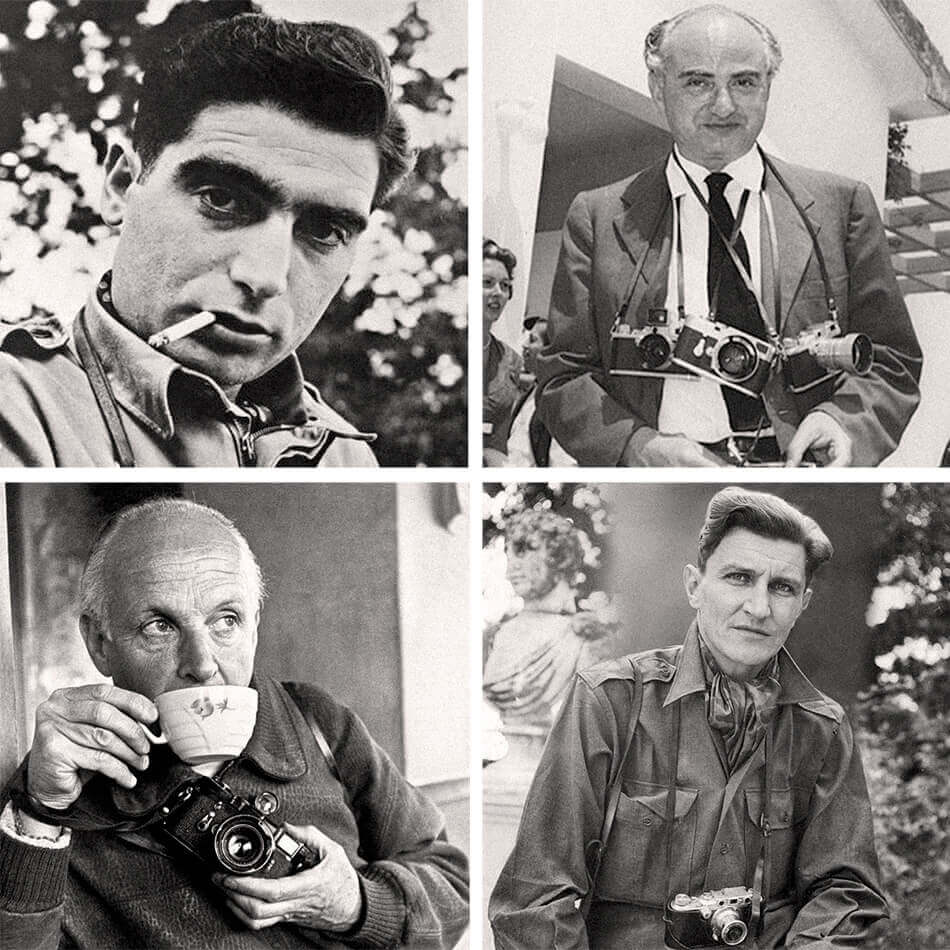
From left to right: Robert Capa, David “Chim” Seymour, Henri Cartier-Bresson and George Rodger, founding members of Magnum Photos.
73 years later, Magnum Photos continues to be one of the most important references in photographic history, which has been able to adapt to the times without losing its essence. Its staff, which grows every year with new additions, is made up of the crème de la crème of photojournalism, and its legacy, over all these years, is a huge exercise in photographic documentation of the most important events in history since the second half of the 20th century.
Epilogue
In my articles on photography, I often stress the peculiarity that every photographic act conveys. I have never considered photography as a kind of irrefutable “proof of life”, but rather as an imitation of reality in which the perception of reality on the part of the person who executes this imitation, using whatever technique, has much more to do with the veracity of what is photographed.
I admit that I am fascinated by that thin red line between truth and falsehood in which photography moves. And I am not referring to the facile appeal to the “simplicity” of manipulating images with today’s digital processes, which, to be fair, only differ from analogue ones in terms of speed and mass-production capacity.
The obvious is not what interests me
The obvious is not what interests me. It is what is not so clearly perceptible. What is intuited in the discourse of each image I see, sometimes clearly, sometimes in a much more subtle way. I’m interested in the subjectivity that is imprinted in each photograph, with or without retouching, simply because the concept of objectivity, apart from the fact that it has no place in our world, no matter how much it is claimed, honestly, I find it much more boring.
In this case, the thin red line is not only in the photographs we see, but in the history of the authors themselves. What is the truth and what is the fiction behind the name Robert Capa…?
All of this connects with my fascination for the story of André Friedmann and Gerda Taro, because in this case, the thin red line is not only in the photographs we see, but in the story of the photographers themselves. Because in this case, the thin red line is not only in the photographs we see, but in the history of the photographers themselves. What is the truth and what is the fiction behind the name Robert Capa? And undoubtedly the key question… does it matter?
The Mexican Suitcase
In 1995, among the belongings of General Francisco Javier Aguilar González, who had been a member of the Mexican diplomacy in France between 1940 and 1942, three boxes wrapped in a plastic bag containing abundant photographic material were found.
This find is known as “The Mexican Suitcase”: more than 4,000 unpublished negatives shot by Robert Capa, Gerda Taro and David “Chim” Seymour during the Spanish Civil War.

Contacts of some of the unpublished negatives found in “La Maleta Mexicana”.
Almost seven decades earlier, a young André Friedmann was forced to flee Paris in the face of the Nazi army’s advance on France, for fear of ending up in a concentration camp because he was both a Jew and a communist sympathiser. Later, in the face of persecution by the Vichy regime, his assistant and fellow photographer, Emérico Weisz “Chiki”, managed to save the photographic material Friedmann had left in his Paris studio after his escape.
Chiki would put more than 4,000 negatives in a backpack and with them he would travel by bicycle to Marseilles, where he managed to deliver the contents to General Francisco Javier Aguilar González, who would play a fundamental role in the Franco-Mexican agreements with the Vichy government, which would allow many Spanish refugees to leave France.
After this, “Chiki” Weisz was arrested and sent to a concentration camp in North Africa, from which he managed to escape several months later and travel to Mexico, where he settled permanently, marrying the painter Leonora Carrington and working as a photojournalist, totally oblivious to the fate of the rucksack containing the negatives saved from the studio of André Friedmann, known to Gerda Taro as Robert Capa.
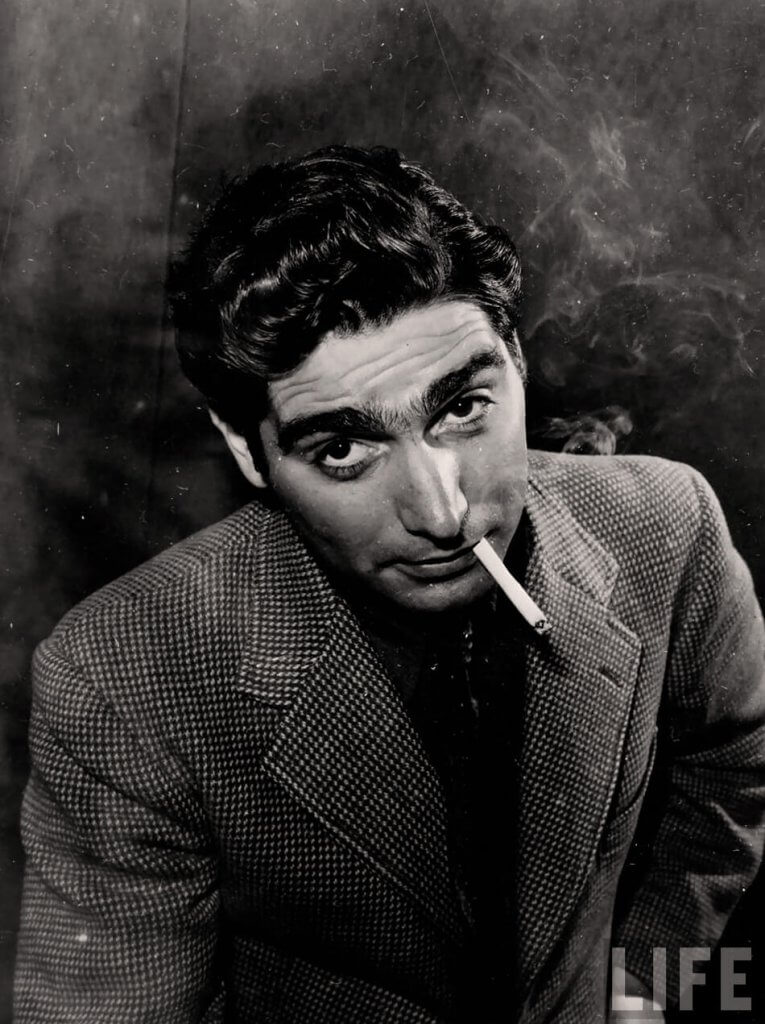
Portrait of Robert Capa for Life Magazine
Headache for your photography business? Take an Arcadina
Headache for your photography business? Take an Arcadina
Fulfil your dream of becoming a professional photographer with the help of our business solutions. Now you can create a website and business for free for 14 days with no commitment of permanence.
Thanks to Arcadina’s business solutions for photographers, your business headaches will disappear.
If you have any queries, our Customer Service Team is always ready to help you 24 hours a day, 7 days a week. We listen to you.


